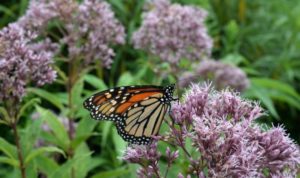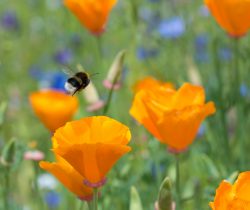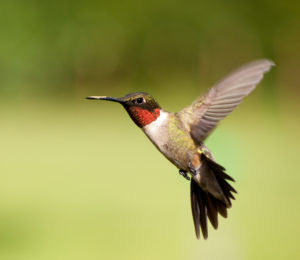Want to attract more birds to your backyard? You don’t need a big field or woods. The key is to make whatever space you have even if it’s NOT a backyard – like a porch, a balcony, a school or work property – so inviting that your feathered friends will want to drop by and come back for more.
- The National Wildlife Federation lists four keys to creating a bird-friendly wildlife habitat, and I’ve added one of my own:
- Food – Plant native shrubs and trees to provide the foliage, nectar, pollen, berries, seeds, nuts and other food sources that most wildlife species need to survive. Augment with supplemental feeders and food, like blocks of suet or seed suspended from a tree branch or hanger. The National Wildlife Federation recommends you have at least three food sources. I don’t have bird feeders, but I do have a lot of bushes and trees that bear berries, like hollies and mulberries.
- Water – All animals need clean water so they can take a bath, drink, and reproduce. I put in a small pond, and also have a couple of birdbaths around my yard. Other water sources may include lakes, rivers, oceans, springs, and rain gardens. Be sure to change the water frequently in something like a birdbath, and keep water circulating in a pond to prevent mosquitoes from breeding.
- Protective Cover – Many animals need shelter to keep them safe from people and predatory animals. Native vegetation, thickets and brush piles, and even dead trees can do the trick. I’ve created a thick brush pile over the years using sticks and branches I’ve trimmed from my trees or picked up after a storm. I put up a wren house behind my own home and away from traffic. I’ve also planted a lot of viburnum, which have the kind of integrated branches and leaves that make perfect and hidden platforms for birds’ nests.
- A Place to Raise Their Babies – Birds need boughs or houses where they can safely nest. Trees or bushes that grow tall and have thick branches are good for this.
- Keep an Eye on Your Pets – Dogs and cats take a pretty devastating toll on wildlife. I once let my dog loose in my yard and she came back with a baby squirrel clenched in her jaws. Cats are by far the biggest culprits, though, especially where birds are concerned. I put a bell on my cat’s collar but it didn’t really seem noisy enough to give the birds adequate warning. What did work? I got rid of bird feeders so the cat couldn’t get the birds if they flew down to the ground to get fallen seed. I also mostly let my cat out at night, when the birds were safely roosting in nests.
If you want to ensure your yard adequately invites wildlife, consider getting your yard certified by the National Wildlife Federation. I got my own property certified several years ago and have been enjoying the wildlife ever since.
When I sit at my home office and look out the window, I can usually count 10 or 15 different species of birds flying by on any given day, including chickadees, wrens, robins, cardinals, blue jays, catbirds, woodpeckers, swallows, vireos and bright yellow goldfinches. We’ve had foxes nesting (which is both positive and negative), and turtles and frogs in our pond. One morning I woke to find a mother deer and two fawns strolling through my front yard – and I live a block from the Washington, DC border!
To get certified, there’s a $20 fee, but that entitles you to a personalized certificate commemorating your achievement as well as a subscription to the organization’s magazine, a subscription to the e-newsletter Wildlife Online – Habitats Edition, and 10% off merchandise you might want to buy from NWF’s catalog. You can also get a metal sign to post in your yard to show you’re committed to protecting wildlife – and maybe encourage your neighbors to help the birds and critters, too.















